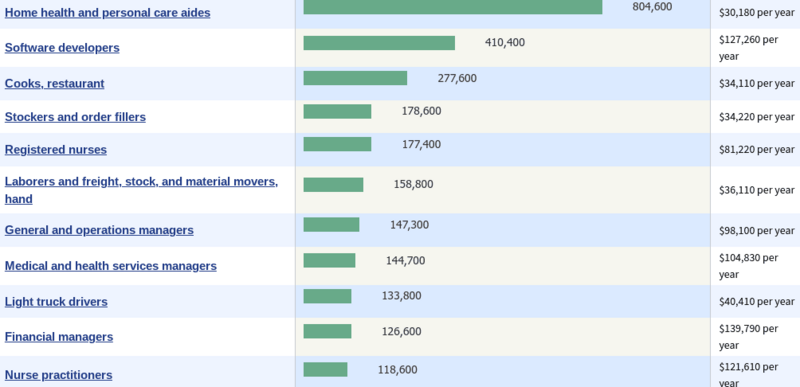How to Write a Cover Letter: 12 Tips and Secrets
Whenever you’re looking for a new job, you have to use all of the resources at your disposal to make a good impression. A cover letter is a great tool that lets you showcase your skills to recruiters in a personable and professional way. But, learning how to write a cover letter that makes a great impression takes practice.
Let’s go over everything you need to know to write a cover letter that gets you more interviews.
What is a Cover Letter?
Before diving any deeper, let’s take a moment to discuss what a cover letter actually is. In simple terms, it’s a one-page document that’s attached to a job application and it includes a summary of the applicant’s professional history, skills, and motivation for applying to the position.
A cover letter should complement and support your resume, expanding on the major achievements and qualifications mentioned there. Additionally, cover letters are also used to illustrate your professional personality and why you’re a great fit for the company.
Besides the actual contents of a cover letter, attaching this type of document to your resume also shows applicants that you’re qualified, organized, and prepared.
Elements You Should Include in Your Cover Letter
If you’re wondering what to write in a cover letter exactly, remember that the exact contents will vary depending on the industry and specific job. While templates do exist, it’s likely that other applicants will also leverage these resources. So, the best way to stand out is to write an original cover letter for every application you submit.
With that said, there are best practices that you can follow in terms of structure to help you get better results. For instance, your cover letter should include your name, phone number, email address, physical address, LinkedIn profile link, portfolio, and a website if you have one.
Moreover, you should also research and find basic information about the company you are targeting and include its name (and the recruiter’s, if possible). In your opening and body paragraphs, relevant experience and examples of professional accomplishments, respectively.
You should also use bullet points to highlight important elements, number achievements when listing them, and restate that you’re the right candidate in the closing paragraph.
In addition to the above, some of the elements that your cover letter should contain include:
Summary of Your Skills
Saying that you’re a problem solver doesn’t do much in terms of the success of your cover letter. Instead, you need to show that you have the ability to solve specific problems by summarizing your skills and telling recruiters how you’ve used these to solve issues in the past.
A great way to do this is by correlating one of your big professional successes to the steps that you took to achieve this goal. Even better, if you know that the company has a big problem (which you may be able to deduce from the wording in the job opening), you can outline exactly how you can help solve it.
Professional Tone of Voice
It’s important to write like yourself because this is part of your professional personality and the resources you bring to the table. But, you also have to make sure that you pick the appropriate tone of voice based on the company you are contacting.
The industry you’re in will also help you determine the right tone. For example, if you’re applying to a law firm, the wording and tone would be completely different from an application for a technology startup. If you’re applying to a new industry, take the time to research job applications in that specific field to increase your chances of success.
Short Story or Anecdote About Your Career
Showing that you have style and personality is essential in certain industries. For these cases, you can tell a short story or anecdote to illustrate your professional skills and overall work style. But, before choosing a story, you need to keep a few things in mind.
For starters, remember that the story needs to be relevant to the job application. Not only this, but your cover letter should only be one page long and your story should not take up most of it, so there is also a limit in terms of length. With that said, taking a storytelling approach is a great way to show your interpersonal, leadership, and critical thinking skills.
Honest Description of Your Professional Experiences
We all want to sound accomplished and skillful in our cover letters. But, remember that honesty is the best policy so you should avoid misleading recruiters, especially in your professional experiences. All of us have access to the internet and information is extremely easy to verify nowadays, not to mention the fact that making up false work experiences is simply wrong.
Rather than listing experiences and skills you don’t have, use your resume to double down on the things you’re good at and make sure that recruiters understand what they get when they hire you.
Unique Pitch and Format
Remember how we mentioned that everyone uses templates when writing a cover letter?
This is actually a major problem that recruiters have learned to spot from a mile away. Rather than relying on someone else’s words, the best path is to write your own cover letter that contains a unique pitch you develop on your own.
Likewise, think about the format you’ll use and think about elements you can add, remove, or adjust in order to stand out (while still keeping it professional of course).
Including a unique pitch and format doesn’t mean that you can’t research what others have done, but use your findings as inspiration instead of a cookie-cutter mold.
Call-to-Action
If you’ve worked in sales or marketing, you’re probably familiar with the concept of a call-to-action or CTA. Simply put, a CTA is a phrase or sentence that tells readers what you want them to do after they finish consuming your content. Just like in marketing and sales, including a CTA in your application can actually boost the number of calls you get.
Although the concept is the same, remember that writing a CTA for a marketing or sales campaign is very different from a job application.
Is There Anything You Should Avoid in Your Cover Letter?
Cover letters are often the first contact that a job seeker has with a company. For this reason, this document needs to be professional and contain zero grammar mistakes.
Some of the elements you want to avoid include:
-
 Overused and cliche phrases like “dynamic,” “significant,” or “detail-oriented”
Overused and cliche phrases like “dynamic,” “significant,” or “detail-oriented” -
 Irrelevant information
Irrelevant information -
 Slang or improper nouns
Slang or improper nouns
12 Tips and Secrets on How to Write a Cover Letter for a Job
Learning how to write a cover letter that increases your chances of getting a good job isn’t always straightforward.
For many people, writing is a skill that either comes naturally or that they’ve developed over time. Others find this part more difficult but have an easier time choosing a story or defining the specific elements that they need to include.
Let’s go over 12 tips to help you write a good cover letter for a job application.
1. Choose Your Goals
The main objective of a cover letter is easy to deduce, but you should think deeper and come up with a list of goals you want to achieve.
For instance, you can focus on your previous experience, highlight mostly your training and education, or choose to make your personality the center point of the letter.
This will help you decide later on what elements to include and which story to tell in the space you have available.
2. Choose the Right Structure
We covered this briefly earlier in this article, but it’s important to understand that you can choose a few different structures for your cover letter.
The structure you choose should align with your goals as well as the industry you’re in. Applicants that are applying to industries that are known for being fast-paced should incorporate more bullet points. Job seekers in creative fields, on the other hand, may be better off leaning into the storytelling approach when submitting an application.
3. Begin with a Functional Header
If recruiters like your cover letter, they will immediately start looking for the best ways to contact you and the first place they will look is your header.
Rather than including a basic header, make sure that it contains all of your contact information like email, phone number, professional social profile handles, and other functional elements.
4. Greet and Introduce Yourself to the Hiring Manager
Impressing recruiters and hiring managers is important for obvious reasons, but the first thing that applicants need to do is catch their attention.
If you know the name of the hiring manager, you should greet this person by name and introduce yourself in the first two lines of your application’s main body.
You can find out the name of the hiring manager by turning to LinkedIn and similar resources. If it’s not clear who the hiring manager or recruiter is, you can include the name of the highest-ranking manager.
5. Write an Engaging Introduction
It’s hard to make a good first impression in a professional setting, especially if you’re trying to establish it through a cover letter. Companies can get thousands of applications and the truth is that not every cover letter gets read fully.
Generic opening lines are the enemy of a good cover letter, so you need to ensure that every sentence in your first paragraph is engaging. A good strategy is to briefly mention the main goal you want to achieve for the company right after you state your name.
6. Describe Your Work Personality (And Why You’re a Good Fit)
Having a good company culture is becoming a requirement for sustained exponential growth and high-ranking managers know this.
Today, companies place a lot of focus on finding candidates that fit their company culture. The best way to demonstrate that you have the aptitude to integrate into the team is to describe your work personality. You should also highlight why you’d be a great fit by using definite statements instead of open phrases.
7. Outline the Skills You Bring to the Table
Demonstrating that you have a compatible professional personality is essential, but the only thing that’s arguably even more important is your skill level. You should take advantage of your cover letter and showcase the skills you bring to the table.
Using anecdotes in these cases is a great idea because they can help illustrate an applicant’s ability without being too straightforward. That said, some recruiters may appreciate the direct nature of bullet points, so you need to adapt depending on the industry standard.
8. Explain Your Professional Motivation
For an employer, adding a skilled worker that’s compatible with the rest of the team doesn’t guarantee a productive environment.
Job seekers need to consider this variable and explain their professional motivations so that recruiters feel more comfortable investing in their training. Professional motivations can vary tremendously, so you need to think beyond financial reasons and dig deeper to find out why you want to get this specific job.
9. Make Sure to Cover the Future in Your Letter
Recruiters and hiring managers are already receiving a summary of your professional experiences in your resume, so you don’t need to center your cover letter around this information.
Instead, you should see your cover letter as a blueprint of your future with the company you want to hire you. Besides including the objectives to attain, you can also put a timeframe on it with phrases like “in 5 years I can help the company achieve XYZ results”.)
If you’re changing careers, this is also a great place to include the reasons why you’re making the switch and what you want your first major milestone to be.
10. Use a Formal Closing
As with in-person conversions, your cover letter needs to have a clear end. Rather than simplifying saying goodbye or singing off in an unprofessional way, you should always use a formal closing. On its own, using a formal closing won’t get you hired, but it can help seal the deal and serve as the cherry on top of a great application.
11. Don’t Use an Aggressive CTA
In some contexts, CTAs have to be direct to work. When it comes to getting hired, using an aggressive CTA can have the opposite effect and actually repel potential employers.
Rather than being abrupt, your CTA should be open-ended, gentle, and polite. So, think about it like an invitation rather than a command.
12. Collect Feedback Before and After
Getting a second pair of eyes on your cover letter can help you spot mistakes that your brain is contravening. You should share your cover letter with professional colleagues to collect feedback and make adjustments as you see fit.
When possible, you should collect feedback from recruiters as well. This is more tricky, but you can always reply to the message after being notified that you were not selected for the position and see if the company is willing to give you feedback.
Getting Help - Your Best Solution
Don't be afraid to admit the solution to your problem is finding someone to do this for you. Your strength can be your ability to recognize your weaknesses. There are two important resources you need to consider.
1. Make sure you are pursuing the perfect career for you. You can find the best careers for your work personality. There is a scientifically designed assessment used by universities and corporations. It's the best career assessment test online that will identify your "work personality" strengths and best matching careers. There are many personality tests but this one uncovers your work personality.
2. Hire expert cover letter writers to build your brand. Consider this an investment in yourself. If it saves you time and gets you that job, it's a great investment.
Articles matching your search
Choosing the Best Career
- Best Green Jobs
- Best Jobs for the Future
- Work from Anywhere Jobs and Careers
- 12 Careers Best Chance to Get a Job in 2024 | NEW
- 9 Highest Paying Tech Careers for 2024
- Highest Paying Jobs | Entrepreneurs and College Graduates
- Work Place Anxiety & Phobias
- Career You Won’t Regret
- 7 Careers Hiring Due to Government Money
- 6 Fastest-Growing, Highest-Paying Jobs that Require a Bachelor’s Degree
- NO Degree Required, Fast Growing, High Paying Jobs
- What is The Perfect Career For Me
- Is My Hobby My Best Career?
- Crazy Jobs
- Highest Paying Work From Home Careers
- Work From Home
- What You Need to Know about Yourself to Work from Home
- 15 Best Recession-Proof Jobs
- Prepare Yourself Against Layoffs
- Get Ready for Your New Career After Lockdown
- Strongest Jobs After Covid
- There Is Still Work Out There
- Brand Yourself to Get a Job | NEW
- Job Certifications a Scam?
- Identify Your True Workplace Strengths
- Best Career Assessments For Your Career Path
- 7 Steps to Success | Career Assessment to Job You Love
- Best Job Search Website Reviews | NEW
- 8 Mistakes New Graduates Should Never Make
- Don't Get Your Resume Rejected by Robots
- Best Headhunting Firms | UPDATED
- Hidden Job Market
- How to Work For Yourself
- How to Ask For a Raise
- Finding the Perfect Career
- Do What You Love – The Worst Career Advice Ever
- Could a Cup of Coffee Change Your Career Path?
- Thinking About Leaving Your Job? Read This First!
- Soft Skills that Make a Great Employee
- Nailing The Video Interview
- Cover Letter Writing Secrets




